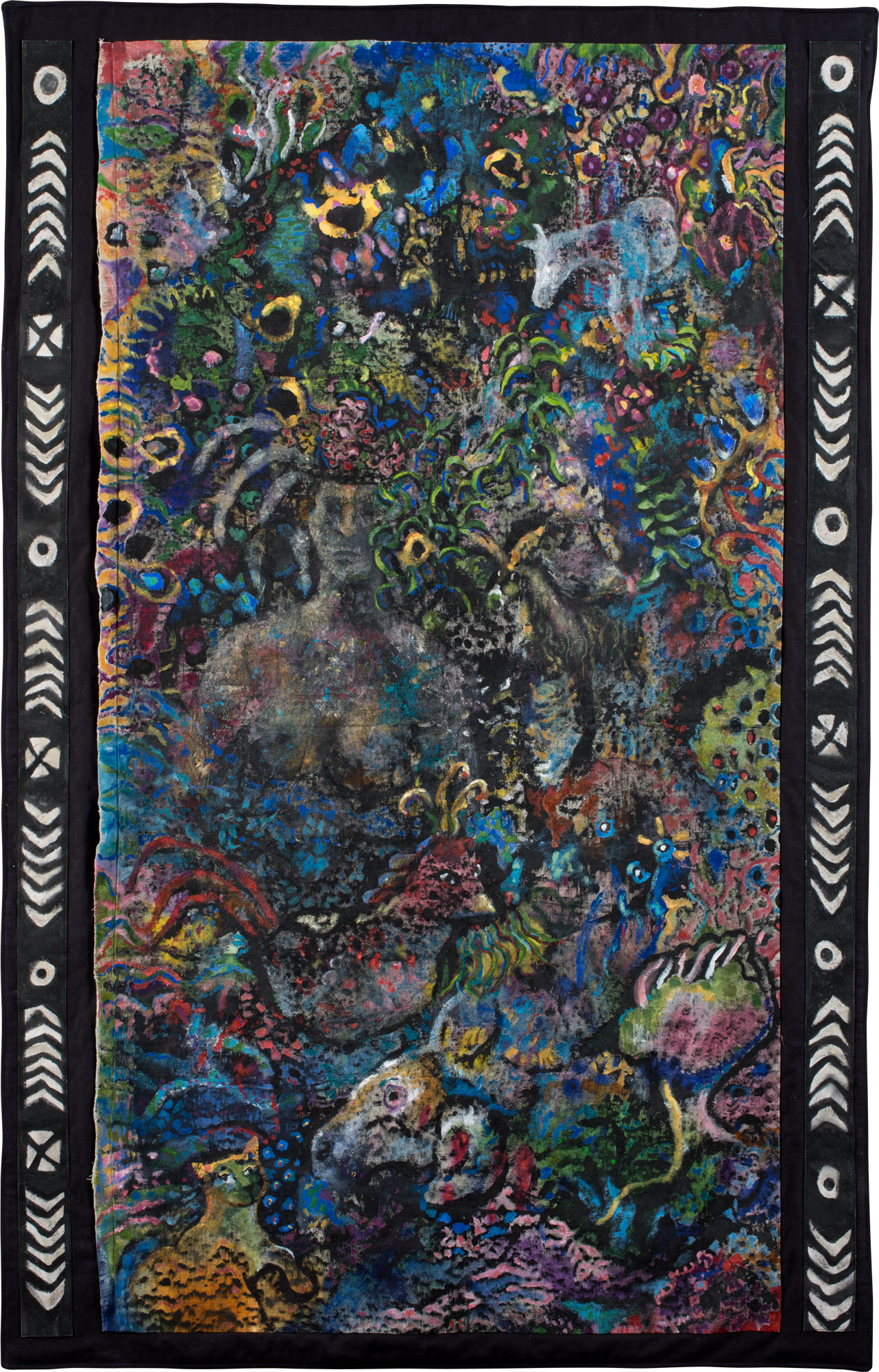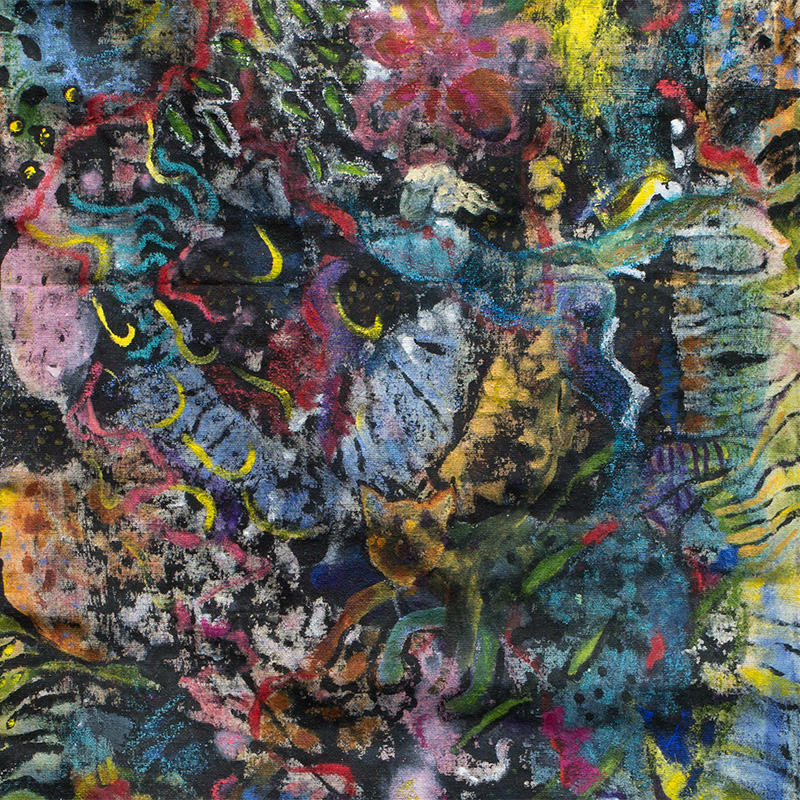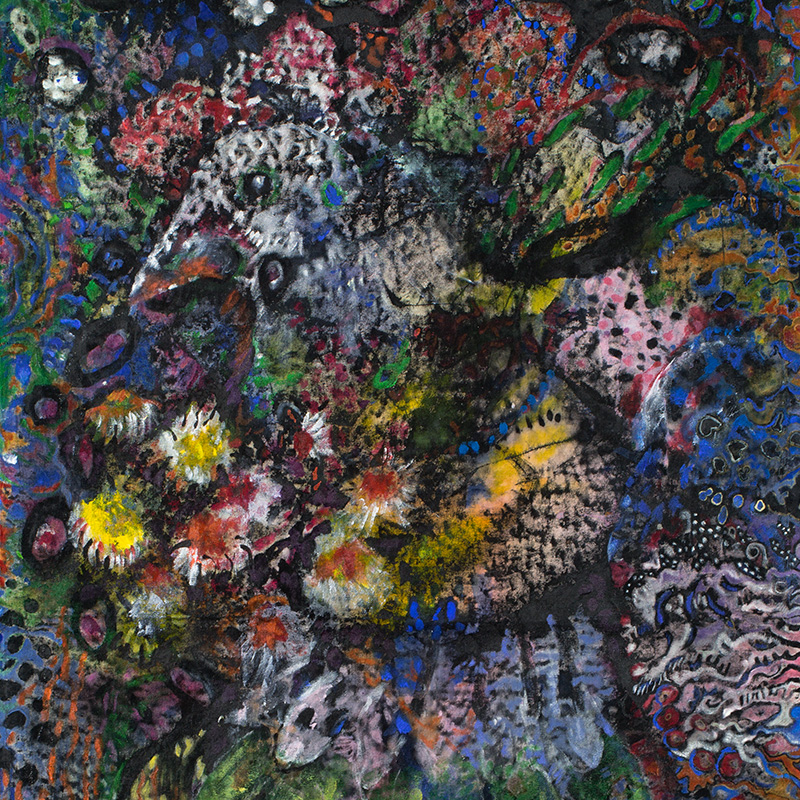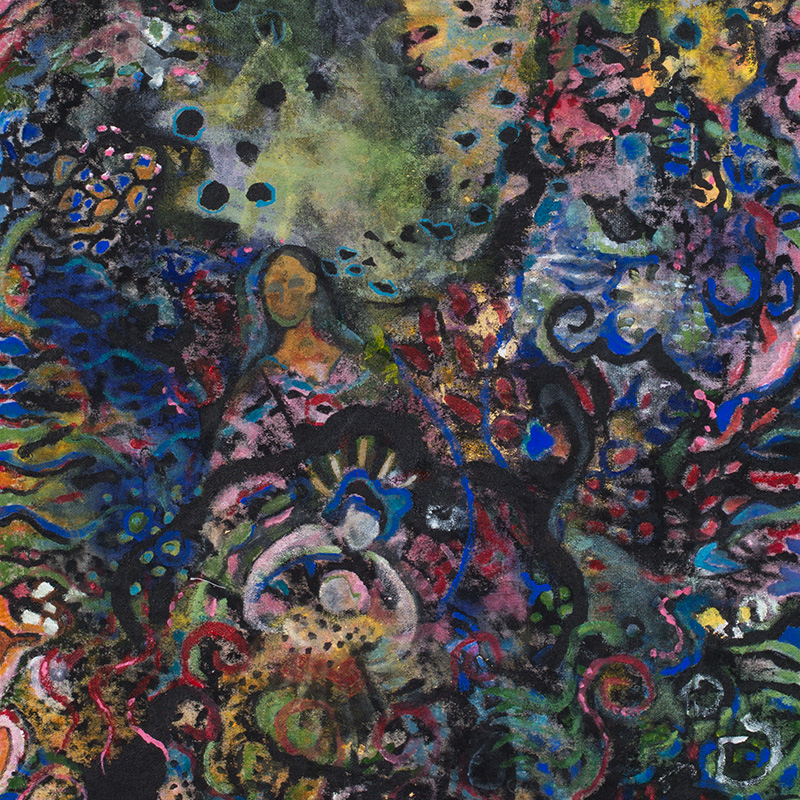
The Portals Tapestries
Terroir in Pattern and Color
Many of the best artworks I have made started with a happy accident. The entire Tapestries series started one day when my art group—Art Safari—decided to work big. Really big. We had been inspired by the large work (almost 12 feet high) of Hilma af Klint (Paintings for the Temple, painted 1907-1915.) Like Hilma, we wanted to walk and crawl on our canvases and to lose ourselves in the swirl and world of our paintings.
I found an old canvas drop cloth we had used to paint the house, and took that along with an ample supply of acrylics. We were working outside on the ground and I just happened to drop my canvas on a little driveway that had cracks and crumbled asphalt—whose surface was covered with gouges, pebbles and stray twigs etc on it. As I painted, the form and texture of that aging driveway came through the canvas creating a rubbing, a distinctive pattern of that very place. I’d made rubbings of old gravestones as a child—but this was a rubbing of that very particular spot on the earth.
I did not notice the power of the pattern that day because I was set on painting something else. But after a few days I could see the underlying pattern. And it was visually fascinating. I found some other big pieces of cheap canvas drop cloth and made some rubbings of other pieces of earth, other “places,” other ground. I was suddenly filled with a strong desire to make brilliant abstract worlds of color on un-sized, un-gessoed, un-stretched low-quality canvas that could be hung as a tapestry. To each b/w rubbing, I added brilliant saturated color.
Often, animals were hidden in the color and sometimes I helped them take stronger form. Even with strong color and with strong patterns of black and white, my eye wanted more pattern to contain these abstract worlds, so I added a ribbon of chevrons—white on black—as a border. (Continued below)

Detail of Early One Morning

Detail of The Suitor

Detail of Putumayo
To keep with the idea of flowing fabric hanging unfettered on the wall, I mounted the paintings on fabric by hand-stitching them. With the help of a master quilter, I was able to sew borders on some pieces and mount them on heavy canvas so that they all hang with a natural flow and drape of fabric. Because I painted on re-purposed drop cloth some of the paintings have frayed edges. Some have holes or flaws in the weave—but those imperfections only added to the unique character of each piece. I welcomed the flaws and ragged edges of these re-purposed materials and incorporated them into the Portals aesthetic. When the tapestries were hung, they were really 3-dimensional images that each had its own shape and flow. These paintings are little worlds brought into being by a rubbing of a very particular place of ground and then embellished with color, and framed with pattern. In a real sense they exist are expressions of terroir. They started as expressions of place. But instead of yielding grapes and wine, these places expressed a particular pattern which was then made into color and form.
The Portals Tapestries were first exhibited at the Buckley Center Gallery at the University of Portland in 2022.